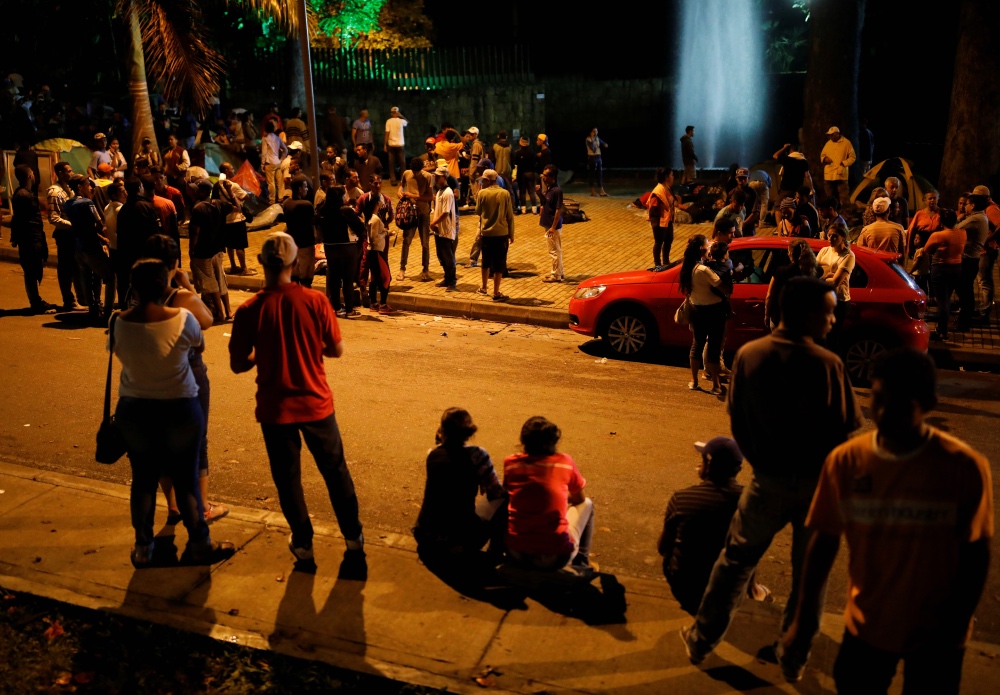Bogota, Colombia
Thomson Reuters Foundation
Colombia is training dozens of inspectors to hunt down cases of labour trafficking and exploitation, a response to the needs of migrants from Venezuela who are at high risk of being victimised, officials said on Wednesday.
About 1.3 million Venezuelans have crossed into neighboring Colombia, fleeing political and economic turmoil, and their dire straits make them vulnerable to forced labour and exploitation, they said.

People gather in a public square that had become an informal camp for several hundred undocumented Venezuelan migrants in Bucaramanga, Colombiam on 27th August, 2018. PICTURE: Reuters/Carlos Garcia Rawlins
Addressing the designated labour inspectors on their first training day, the country’s deputy labour minister, Andres Felipe Uribe, said the team was on the frontline of efforts to eradicate “the scourge” of human trafficking.
“This is an elite unit,” Uribe said. “We’re fighting a crime, fighting against a social drama in the context of…a migration flow that we’re receiving.”
About a third of all human trafficking cases in Colombia involve victims of forced labour and exploitation.
Few cases of labour trafficking in Colombia are chased down, with only 21 cases of suspected forced labour and begging reported by Colombian authorities last year, according to the US State Department’s 2019 Trafficking in Persons report.
Colombia convicted just 19 people for human trafficking, down from 21 in 2017, according to the report.
Its labour ministry has “made insufficient efforts to identify or investigate cases of forced labor,” the report said, recommending labor inspectors get training on trafficking.
The training is aimed to teach them to find concrete evidence that can be used to prosecute cases successfully.
They will learn how to question employers and workers effectively and to detect signs of coercion in their behavior, according to a handbook they will use.
They will look for signs that workers are forced to live where they work, such as mattresses, soap and towels, and signs of forced labour such as padlocked windows and doors and posters showing times when workers are allowed to eat, sleep and wash, it said.
“We have to get prepared so that these reports of cases are received properly,” said Mario Gomez, a top state prosecutor.
Victims of forced labour, including children, are found in mining, agriculture and as crop pickers in fields of coca, the raw ingredient of cocaine, Gomez said.
Child labour is driven by poverty and local cultural attitudes that consider it “normal,” said labour inspector Juan Carlos Ballesteros at the training session.
In Colombia’s northern desert region of La Guajira, which borders Venezuela, young children from both countries pick through rubbish dumps, work as street vendors and in salt mines, sell contraband petrol and beg on the streets.






